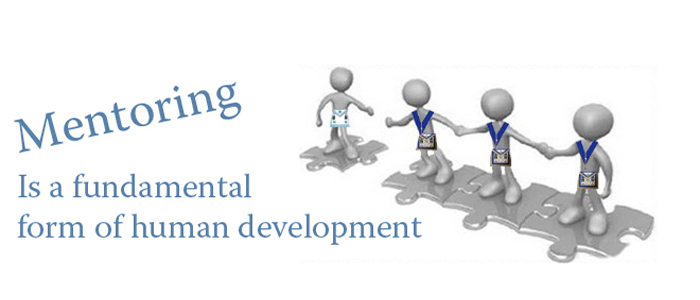
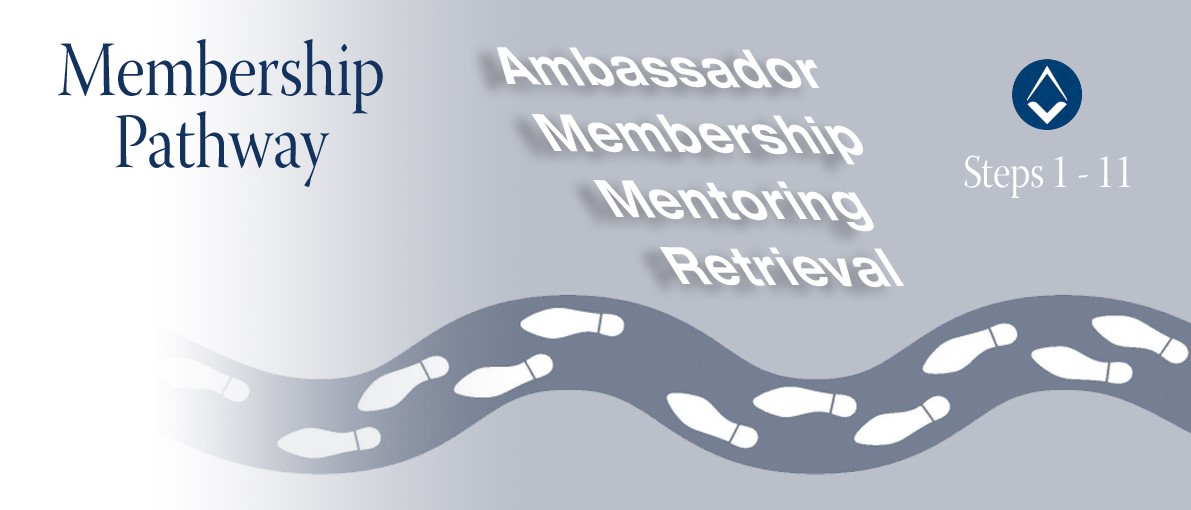
For more details on the lodge room, place the cursor over the item you want to explore and click the left mouse button.
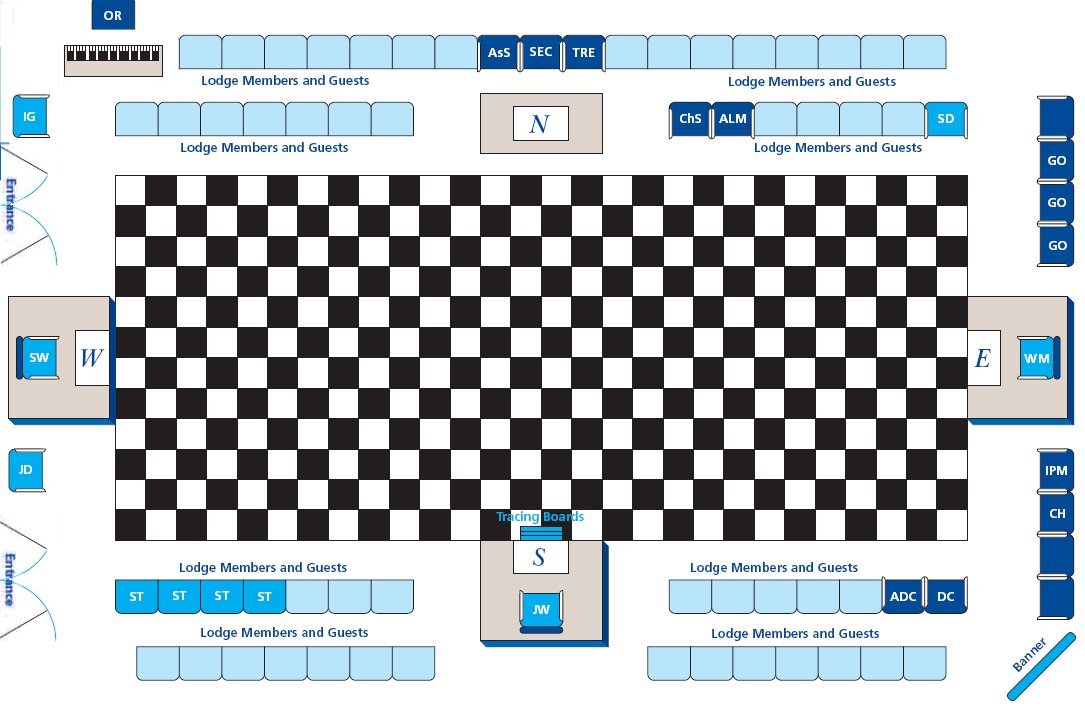
The lodge room, sometimes referred to as ‘the temple’ and has a typical layout. This is where a lodge holds its regular meetings. If you start visiting other lodges you will find they vary as some premises are purpose-built, whilst others are converted or even shared with other functions.
The point of entry always is in the west and facing east.
The WM sits in the east, the SW in the west and the JW in the south. The secretary and treasurer are normally located on the north side
The other junior officers vary somewhat in location from lodge to lodge, but generally are in the positions shown on the picture above.
The lodge banner and warrant are displayed in the room at the south east although this often varries from lodge to lodge.
Furthering
your Masonic
education through mentoring
Inner Guard
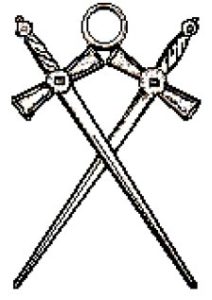 The inner guard, often a fairly inexperienced member, is given the responsibility of ensuring only those entitled to be present are present. This can be quite a daunting task, but with the assistance of the director of ceremonies and the tyler, who guards the outside entrance to the lodge, it can be most interesting.
The inner guard, often a fairly inexperienced member, is given the responsibility of ensuring only those entitled to be present are present. This can be quite a daunting task, but with the assistance of the director of ceremonies and the tyler, who guards the outside entrance to the lodge, it can be most interesting.It is one of the first steps in the progression to the master’s chair and the requirement for the new member to work on the floor of the lodge will provide him with a greater appreciation of the ceremonies carried out in the lodge room. The inner guard will be found just inside the door of the lodge room.
The jewel appended to the inner guard’s collar is two swords in saltire.

Organist
 A newly made Mason will quickly come to appreciate that a good organist really does make a huge difference to the atmosphere of a lodge meeting. His ability to interpret the proceedings from the keyboard adds enormously to the drama and tension of the ceremony.
A newly made Mason will quickly come to appreciate that a good organist really does make a huge difference to the atmosphere of a lodge meeting. His ability to interpret the proceedings from the keyboard adds enormously to the drama and tension of the ceremony.In many lodges, although not all, singing is an important part of the evening which the members greatly enjoy. Because we can’t all sing in tune, the organist is often called upon to rescue the moment!
The jewel appended to the organist’s collar is a lyre.
Assistant secretary
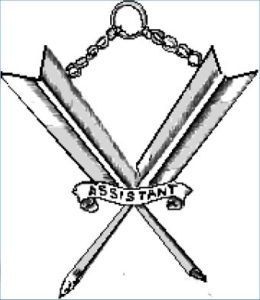 The role of the assistant secretary, like the assistant director of ceremonies, varies considerably from lodge to lodge.
The role of the assistant secretary, like the assistant director of ceremonies, varies considerably from lodge to lodge.Occasionally he may be given interesting tasks, but more often than not, especially if the secretary has many years service, his assistant is under-utilised.
With an ever increasing volume of email traffic, allowing quicker and more cost effective communication, it should be recognised that some lodge secretaries of long standing may not be able to communicate in this way. This in itself does not represent a problem, as it is possible to retain the great experience such secretaries bring to the office, by recommending the assistant secretary acts as a mailbox for the secretary.
The jewel appended to the assistant secretary’s collar is two pens in saltire, (saltire in heraldry means a diagonal cross e.g. Scottish Flag) surmounted by a bar bearing the word assistant.
Secretary
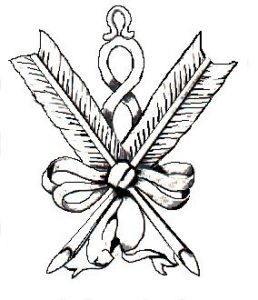 The secretary is responsible for the business of the meeting. He keeps the lodge minutes and is responsible for the general paperwork, including the issue of summonses and the annual returns to Grand Lodge. He is also responsible for liaison with Provincial Grand Lodge, dealings with other lodges and for communications from and to members.
The secretary is responsible for the business of the meeting. He keeps the lodge minutes and is responsible for the general paperwork, including the issue of summonses and the annual returns to Grand Lodge. He is also responsible for liaison with Provincial Grand Lodge, dealings with other lodges and for communications from and to members.He is expected to have a sound knowledge of the regulations of the Craft, as he may be consulted by the master on points of procedure.
There is a secretary’s table provided, but its position will vary from lodge to lodge.
The jewel appended to the secretary’s collar is two pens in saltire, tied by a ribbon (saltire in heraldry means a diagonal cross e.g. Scottish Flag).
The Secretary has hands-on daily administration of all matters connected with the smooth running of the lodge. He is effectively the conduit between Grand Lodge, Provincial Grand Lodge and your lodge. He receives the mail addressed to the lodge, and submits the returns detailing the membership, ceremonies conducted, and matters associated with the day-to-day affairs of the lodge.
Normally a secretary holds the post for a number of years, providing continuity and experience for successive masters. It is the secretary’s duty to organise the summons, and distribute them. Should you have any problems or queries with regard to Freemasonry an experienced secretary should be able to advise.
Annually the secretary receives copies of the Provincial Year Book. He holds these publications on behalf of the lodge and they can be used by any member of the lodge.
Treasurer
 The qualification for treasurer is that he must be a member of the lodge. The treasurer, as already stated, is elected rather than appointed, and is responsible for the receipt and banking of funds, making payments and the production of a set of accounts.
The qualification for treasurer is that he must be a member of the lodge. The treasurer, as already stated, is elected rather than appointed, and is responsible for the receipt and banking of funds, making payments and the production of a set of accounts.He also submits an annual statement of accounts for auditing and circulation to the members of the lodge, and provides the financial control over the lodge income and expenditure.
Some lodges have a particular desk and chair reserved for him, but this depends on availability and space.
The treasurer is responsible for the finances of the lodge. Annually he produces a financial summary report, which is submitted to the auditors, who are elected from within the lodge membership.
It is the responsibility of each member to pay his subscriptions, together with any dining charges to the treasurer promptly.
The treasurer settles any debts incurred by the lodge, such as the lodge rent for the building where meetings are held, the various levies imposed by Grand Lodge and Provincial Grand Lodge, and dining expenditure.
A treasurer requires sound judgment, for ultimately, it is on his recommendation that the level of subscriptions for members is set.
The jewel appended to the treasurer’s collar is a key.
Charity steward
 The charity steward is basically a fund-raiser. It is at times a thankless task and may require a lot of determination to succeed.
The charity steward is basically a fund-raiser. It is at times a thankless task and may require a lot of determination to succeed.His prime responsibility is to raise monies for Freemasons charities, however, he can often be found making appeals on behalf of local and non-Masonic charities.
He collects donations, explains the advantages of gift aid forms, standing orders etc. He disseminates information about the various charities and their work, as this ensures all members appreciate the use to which their donations are put and also encourages them to be as generous as their personal circumstances permit.
He does not have a particular place reserved for him in the lodge room.
The jewel appended to the charity steward’s collar is a trowel.
Almoner
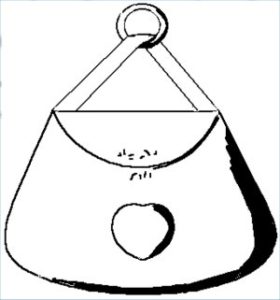 The almoner keeps in touch with members and their families in times of illness or distress.
The almoner keeps in touch with members and their families in times of illness or distress.Lodge funds can be allocated to the almoner for specific purposes, such as the distribution of Christmas cards and gifts to widows.
Each almoner has his own method of working, but typically an almoner arranges visits to those in hospital, organises practical help for members when they or their families are in difficulties, or simply visits members who find themselves unable to attend meetings.
The almoner also makes regular visits to the lodge widows.
The almoner provides an individual brother with a very important link to various sources of assistance. With the help of the almoner, brethren can receive assistance in times of poverty or distress and this facility is of course provided in total confidence.
Like the charity steward, the almoner does not have a reserved place in the lodge room.
The jewel appended to the almoner’s collar is a scrip-purse, upon which is a heart.
Junior and senior deacons
 The senior deacon who sits at the right side of the WM and the junior deacon who sits at the right of the senior warden, are the two officers who conduct candidates through the various ceremonies. Upon them rests a great deal of responsibility for the success of a ceremony.
The senior deacon who sits at the right side of the WM and the junior deacon who sits at the right of the senior warden, are the two officers who conduct candidates through the various ceremonies. Upon them rests a great deal of responsibility for the success of a ceremony.They need to have knowledge of, and the confidence to carry out the perambulations, for if the candidate were to find himself in the wrong part of the lodge room at the wrong time, it would detract from the ceremony. As far as the ceremony is concerned, a lodge with two efficient deacons will rarely go wrong.
The jewel appended to the deacons’ collars is a dove and olive branch.
The deacons look after and guide the candidates during ceremonies. Their duties need to be carried out with care and dignity. The enjoyment and understanding of a candidate can be greatly enhanced by the sympathetic attitude of the deacons, and by the efficiency of their working. They have one of the most interesting and delightful roles, which involves both learning ritual and floor-work. They also carry a wand as a badge of office.
Worshipful Master
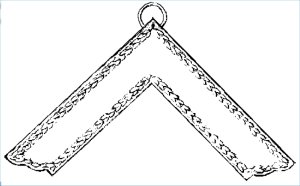 The qualification required to be eligible for election to master is that the brother should have served for a full year as a senior warden or junior warden in a regular lodge.
The qualification required to be eligible for election to master is that the brother should have served for a full year as a senior warden or junior warden in a regular lodge.The master is effectively the chief executive of the company. Nothing much can happen at a lodge meeting until the master starts the proceedings and the members would be in for a marathon session if the master didn’t close them!
In between the opening and closing of the lodge, depending on the business to be transacted, the master will call upon various officers to carry out particular duties, although many will be carried out by the master himself.
In many lodges there is what may be described as ‘a ladder system’ with each officer progressing one step up the ladder at the annual installation meeting. Even in lodges employing the ‘ladder system’ it is not always strictly observed and would not normally apply to such offices as lodge secretary, DC, almoner and charity steward as these are offices that benefit from a period of continuity and are not therefore regarded as progressive.
Although the appointment of all officers, other than those elected, is as previously stated in the gift of the WM, a wise master will adhere to established sensible practice in order to maintain harmony within his lodge.
It is not compulsory for members to advance through the offices, but under normal circumstances, a member should not accept the office of warden unless he is prepared to advance to the master’s chair.
The jewel appended to the master’s collar is the square; a master’s collar may on occasion be adorned with a commemorative jewel indicating that the members of his lodge have played their part in establishing a fund, which was placed at the disposal of the Royal College of Surgeons. No other jewel or badge is permitted to be attached to any collar.
Immediate past master
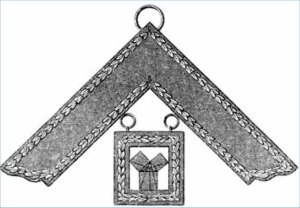 After his year as master of the lodge a Mason becomes the immediate past master (IPM).
After his year as master of the lodge a Mason becomes the immediate past master (IPM).Strictly the IPM is not an officer of the lodge, but his position is an important one, as it is his responsibility to sit beside the master, both in the lodge and the festive board (meal after the meeting), and give him support and guidance when needed.
Chaplain
 Whilst the discussion of religion (and politics) is not permitted within our meetings, each one opens and closes with prayer.
Whilst the discussion of religion (and politics) is not permitted within our meetings, each one opens and closes with prayer.Many lodges that have no members of the clergy amongst their number, appoint one of their senior Masons to the office of chaplain.
The office of chaplain is not surprisingly, a devotional one. He offers the prayers of the lodge, but need not be a man of the cloth.
He is usually positioned close to and to the left hand side of the master and is quite often a very experienced Mason. He should be happy to be approached by the less experienced members for advice and instruction.
The jewel appended to the chaplain’s collar is the Volume of the Sacred Law on a triangle, surmounting a glory (sunburst).
Director of Ceremonies
 The Director of Ceremonies (DC), as his title implies, has the job to direct the ceremonial aspects of our meetings.
The Director of Ceremonies (DC), as his title implies, has the job to direct the ceremonial aspects of our meetings.As in public life when ceremonial is required, such as a State Funeral or Royal Wedding, the important events call for meticulous planning, rehearsal and organising for the requirements of the occasion.
The DC’s role is to make certain that ceremonies are efficiently conducted with dignity and decorum and that all concerned are aware in advance of what they have to do.
The DC is responsible for the ceremonial of the lodge and the smooth running of the meeting. He should ensure that all articles necessary for a meeting are laid out correctly, and will arrange processions in and out of the lodge room.
He also attends to matters of protocol, such as the correct way to receive important visitors and give salutations to grand officers.
He will of necessity be positioned in a prominent place in the lodge, so that he can closely observe that all procedures and rituals are being carried out correctly, and can quickly intervene to assist should the need arise.
He is also responsible for the manner in which the after meeting is conducted in the dining room, ensuring that protocols are adhered to, but allowing the brethren to enjoy themselves within the bounds of propriety.
The jewel appended to the DC’s collar is two rods in saltire, tied by a ribbon.
Junior Warden
 The junior warden (JW) sits at about 45 degrees to the master’s left in the south, while the senior warden sits opposite and facing the master in the west.
The junior warden (JW) sits at about 45 degrees to the master’s left in the south, while the senior warden sits opposite and facing the master in the west.They have important roles to play, assisting the WM in the running of the lodge.
Serving as a warden also provides them with the opportunity to prove to the membership that their ability and commitment makes them suitable candidates for advancement.
The wardens have different but complementary roles in the lodge and assist the master to open and close the lodge, and conduct the rituals.
In the normal course of events this year’s senior warden will usually be elected as next year’s WM.
As previously stated, the qualification for advancement to the master’s chair is that a brother shall have served for a full year as a warden in a regular lodge (that is to say, from one regular installation meeting until the next regular installation at the corresponding period in the following year (Book of Constitutions 105a).
Naturally, a brother who has previously served in the office of master is also qualified to serve in that office again, but not continuously in the same lodge for more than two years in succession, unless by dispensation, neither shall a brother be master of two or more lodges at the same time without dispensation.
If the investiture of a warden shall not have taken place at the meeting at which the master was installed, and thereby the brother appointed has not served a full year, he cannot be included among those eligible for election as master of the lodge except by dispensation.
The jewel appended to the junior warden’s collar is the plumb rule.
Senior warden

The senior warden (SW) sits opposite and facing the master in the west, whilst the junior warden sits at about 45 degrees to the master’s left in the south. They have important roles to play, assisting the WM in the running of the lodge.
Serving as a warden also provides them with the opportunity to prove to the membership that their ability and commitment makes them suitable candidates for advancement.
The wardens have different but complementary roles in the lodge and assist the Master to open and close the Lodge, and conduct the rituals.
In the normal course of events this year’s SW will usually be elected as next year’s WM.
As previously stated, the qualification for advancement to the master’s Chair is that a brother shall have served for a full year as a warden in a regular lodge (that is to say, from one regular installation meeting until the next regular installation at the corresponding period in the following year (Book of Constitutions 105a).
Naturally, a brother who has previously served in the office of Master is also qualified to serve in that office again, but not continuously in the same lodge for more than two years in succession, unless by dispensation, neither shall a Brother be master of two or more Lodges at the same time without dispensation (Book of Constitutions 115).
If the investiture of a warden shall not have taken place at the meeting at which the WM was installed, and thereby the brother appointed has not served a full year, he cannot be included among those eligible for election as master of the lodge except by dispensation (Book of Constitutions 109).
The jewel appended to the senior warden’s collar is the level.

Lodge Banner
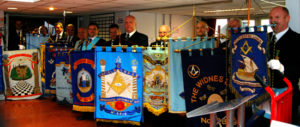 The banner which adorns almost every English Constitution Lodge today became popular during the middle to second half of the 18th century, originating from a simple means of identification dating back thousands of years.
The banner which adorns almost every English Constitution Lodge today became popular during the middle to second half of the 18th century, originating from a simple means of identification dating back thousands of years.An easily recognised symbol was used as a rallying point in time of battle or to identify the location of the group within the camp. The Assyrians, Egyptians, Greeks and Romans all fought under their respective banners and even today, the colours so revered by every army battalion are items of great pride and lifelong honour.
When one visits a cathedral in England or even a local church, we frequently find a flag or regimental colours, of great antiquity, displayed with great pomp and pride.
Some such easily recognised symbols within Freemasonry are of course the Roman Eagle and the standards used in the Royal Arch. Moving on to more recent times, but still within Freemasonry, are the banners used in Knights Templar, two colours only are used in this case.
The introduction shortly thereafter of individual recognition colours or coats of arms was brought about by the all enveloping suits of armour and the need to recognize ones own side or leader in the heat of battle. As more and more knights adopted this form of easy recognition disputes arose when the designs clashed and precedent was disputed.
From these disputes originated official heraldry, and the proper methods used in the granting, design and application of arms, was established in 1484 by the foundation of the College of Arms in London. It still exists to this day and is the sole Arbitrator of Arms granted in England and Northern Ireland.
This may seem a bit over the top for a lodge, but is it really? We all wish to identify with something or someone, it is human nature to do so. At Provincial Grand Lodge meetings, does not the PrGM ask: “How do you find the lodges?” with the reply: “Ranged under their respective banners.”
So it is obviously accepted by the rulers of the Craft. By rights it should have a distinguishing feature so that it is easily recognised by members and everyone else. While simplicity is to be commended, to tell the full story we often need more than a just a square and compass to get the full message across. It is for this reason that curious stories lie behind some of the ornate banners we see at our meetings.
Tracing Board
 The first degree tracing board is the most extravagant of the three in allegory, and is thus explained; the form of a lodge is a parallelepipedon in length from east to west, in width between north and south, in depth from the surface of the earth to the height of the heavens.
The first degree tracing board is the most extravagant of the three in allegory, and is thus explained; the form of a lodge is a parallelepipedon in length from east to west, in width between north and south, in depth from the surface of the earth to the height of the heavens.Masonic lodges are situated due east and west to illustrate the significance our ancient brethren attributed to the east, the sun rises in the east and sets in the west, higher learning (Greek philosophy) originated in the east and then spread to the west.
Lodges are symbolically supported by three great pillars representing wisdom, strength, and beauty (not to be confused with the two brazen pillars Boaz and Jachin). These three pillars also represent the three elected officers, who in turn represent the original three Grand Masters behind the construction of the temple of Solomon.
The pillars also represent three orders of architecture – Ionic, Doric and Corinthian – and seemingly support the whole canopy of the heaven, which is accessible by a ladder.
The ladder represented here is a literal translation of Jacob’s ladder, a mystical vision from the Old Testament believed to connect heaven and earth. Among the ladder’s rungs sit symbols of faith, hope and charity – the personal virtues required to attain the pinnacle of Masonic enlightenment.
The path, as well as the virtues, all stem from a central point – the Holy Bible. (Note the placement of the square and compasses, which varies over different ages and countries.)
The lower interior of the lodge is composed of ornaments, furniture and jewels.
The ornaments of Freemasonry are the mosaic pavement, the blazing star and the indented border; the mosaic pavement is the black and white checkered flooring representing the duality of good and evil, the blazing star the glory in the centre, and the indented border is the skirt-work around the edges – representative of the various blessings which surround us.
Strewn about the interior are various working tools, the ashlars and a trestle board; all of which are a common sight in any lodge today (each with their own signification).
Tyler
 Outside the door of the lodge is the Tyler.
Outside the door of the lodge is the Tyler.The qualification for election to tyler is that of being a master Mason. As previously stated, the tyler assists the inner guard in ensuring only persons entitled to be present are present and additionally, looks after brethren prior to them entering the lodge.
In some lodges, the office of tyler is on the ladder of progression. There is however, a school of thought that believes the tyler should be an office occupied after being IPM, as an experienced Mason is better able to guide and assist the inner guard and ensure visitors are suitably qualified.
The tyler is positioned just outside the door of the lodge room and can often communicate with the inner guard through a wicket fitted into the door.
The jewel appended to the tyler’s collar is a sword.
Square Pavement
 In most lodge rooms you will find a black and white squared carpet or chequered floor. This denotes our chequered existence, happiness and sorrow.
In most lodge rooms you will find a black and white squared carpet or chequered floor. This denotes our chequered existence, happiness and sorrow.The Masonic tradition is that the floor of the Temple of Solomon was decorated with a mosaic pavement of black and white stones. There is no historical evidence to substantiate this statement.
The Masonic idea was perhaps first suggested by this passage in the Gospel of Saint John xix, 13, When Pilate, therefore, heard that saying, he brought Jesus forth, and sat down in the judgment-seat in a place that is called the Pavement, but in the Hebrew, Gabbatha. The word here translated pavement is in the original Lithostroton, the very word used by Pliny to denote a mosaic pavement.
The Greek word, as well as its Latin equivalent is used to denote a pavement formed of ornamental stones of various colors, precisely what is meant by a mosaic pavement. There was, therefore, a part of the Temple which was decorated with a mosaic pavement.
The Talmud informs us that there was such a pavement in the conclave where the Grand Sanhedrin held its sessions.
By a little torsion of historical accuracy, the Freemasons have asserted that the ground floor of the Temple was a mosaic pavement, and hence as the lodge is a representation of the Temple, that the floor of the lodge should also be of the same pattern.
The mosaic pavement is an old symbol of the Order.
It is met with in the earliest rituals of the 18th century. It is classed among the ornaments of the lodge in combination with the indented tassel and the blazing star. Its coloured stones of black and white have been readily and appropriately interpreted as symbols of the evil and good of human life.
Grand Officer
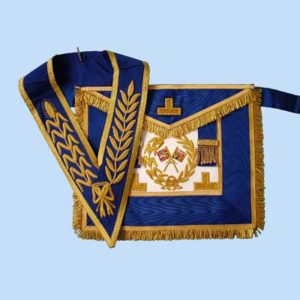 The offices in a Grand Lodge are generally derived from the corresponding offices in its subordinate lodges. However, there are certain offices that must necessarily be filled in Grand Lodges, but have no private lodge equivalent. These are outlined below:
The offices in a Grand Lodge are generally derived from the corresponding offices in its subordinate lodges. However, there are certain offices that must necessarily be filled in Grand Lodges, but have no private lodge equivalent. These are outlined below:
Deputy Grand Master
In some jurisdictions, a Deputy Grand Master serves as the Grand Master’s assistant, and is given the authority to act in the Grand Masters name in his absence.
In England, under the jurisdiction of the United Grand Lodge of England, should the Grand Master be a member of the Royal family, a Pro Grand Master is elected to officiate as Grand Master in his absence on Royal duties.
Grand Chancellor
The Grand Chancellor is responsible for external relations and formal interaction with the Grand Lodges of other jurisdictions.
The United Grand Lodge of England changed its constitution in 2007 to allow for the appointment of a Grand Chancellor for the first time.
Only a few jurisdictions have Grand Chancellors. In most jurisdictions, the Grand Secretary fulfills these duties.
Lodge of Antiquity No 2 and Royal Somerset House and Inverness Lodge No IV, in England, are rare examples of lodges that appoint a chancellor as one of their officers. In Antiquity it tends to be the senior active member of the lodge. In No IV it appears that when the office was created in the19th century it was intended to be similar to the role of chaplain. However, when revived in the early 20th century, the role was more directed towards external relations. By the late 20th century it appears that it had become customary for the office to be awarded to the longest serving member of the lodge.
Grand Registrar
In some jurisdictions a Grand Registrar is appointed to be the principal legal officer of a Grand Lodge. The role is generally held by a qualified lawyer or judge.
In other jurisdictions, there is no official title given to the holders of these duties.
Grand Superintendent of Works
When this office exists, the Grand Superintendent of Works is a Grand Lodge officer responsible for the Grand Lodge building, and as such, the office is usually awarded to a qualified architect or builder.
Responsibility for individual lodge buildings usually falls to a committee.
Grand Sword Bearer
Many Grand Masters are preceded in formal processions by a ceremonial sword. In such cases a Grand Sword Bearer is appointed to carry the sword.
Grand Standard Bearer or Grand Banner Bearer
Many Grand Masters or Grand Lodges have an official standard which is carried behind the Grand Master in formal processions.
In such cases a ‘Grand Standard Bearer’ or ‘Grand Banner Bearer’ is appointed.
Grand Pursuivant
It is the Grand Pursuivants duty to announce all applicants for admission into the Grand Lodge by their names and Masonic titles, to take charge of the jewels and regalia of the Grand Lodge, to attend all communications of the Grand Lodge, and to perform such other duties as may be required by the Grand Master or presiding officer.
Assistant Director of Ceremonies
 The Assistant Director of Ceremonies is exactly that and, depending upon the director of ceremonies, will either be involved in the floor work or merely occupy a relatively inactive office.
The Assistant Director of Ceremonies is exactly that and, depending upon the director of ceremonies, will either be involved in the floor work or merely occupy a relatively inactive office.The ADC will usually sit adjacent to the DC.
The jewel appended to the ADC’s collar is two rods in saltire surmounted by a bar bearing the word ‘assistant’.
Steward
 This is likely to be the first office you will have in the lodge. The stewards’ main function is an integral part of a successful festive board, as in many lodges the stewards will be responsible for setting out the place-cards prior to the dinner, and serving the drinks during the festive board. It is a very good way to meet the members. They are also looked on as stand-ins for any absent officer, to prepare for future office.
This is likely to be the first office you will have in the lodge. The stewards’ main function is an integral part of a successful festive board, as in many lodges the stewards will be responsible for setting out the place-cards prior to the dinner, and serving the drinks during the festive board. It is a very good way to meet the members. They are also looked on as stand-ins for any absent officer, to prepare for future office.The stewards, who are normally the newer members, are the officers who arguably have one of the most important duties of the lodge, which is to look after the visitors and the inner needs of their own brethren.
Carrying out these duties provides the steward with the opportunity to meet and talk with many members of the lodge and, in turn, allows the brethren to get to know the newer members. The work of the stewards takes place outside the lodge room, where a different set of traditions are enacted, although these are by custom and practice, rather than by dictate.
The jewel appended to the steward’s collar is a cornucopia (also known as the horn of plenty) between the legs of a pair of compasses extended.
Furthering
your Masonic
education through mentoring



